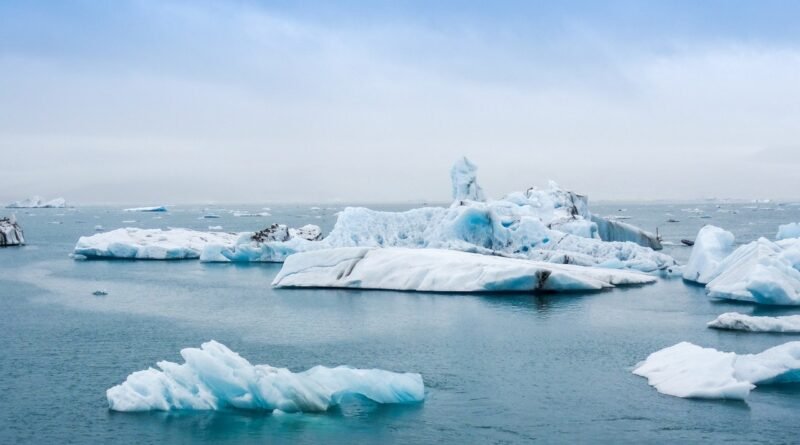Global Warming
Global Warming
SANDIPAN K GOSWAMI
One of the rising topic of discussion in the present time is Global Warming. It is
increasing bit-by-bit every single second. The main reason for the rise of global warming
on Earth is that most of the population doesn’t actually know what is. So global
warming is a term often used interchangeably with climate change, as it is one of the
most important measures of global changes. It refers to the rise in average global
temperatures, which is linked to significant impacts on humans, wildlife, and
ecosystems around the world. In simple words, Global warming is a gradual increase in
the earth’s temperature generally due to the greenhouse effect caused by increased
levels of carbon dioxide, CFCs, and other pollutants. There are many factors that lead to
global warming. Now some people will say that global warming is only caused due to
factories and some industries, like transportation, electricity production, etc. but no.
even farmers contribute to global warming. Now the question is, how can farmers
contribute to global warming? See, the main direct agricultural GHG emissions are
nitrous oxide emissions from soils, fertilisers, manure and urine from grazing animals;
and methane production by ruminant animals and from paddy rice cultivation. Both of
these gases have a significantly higher global warming potential than carbon dioxide.
So to make people aware, today I will be focusing on 6 main reasons for the increase of global warming.
1. Industrial Activity:
Electricity and heat production are the largest contributors to global emissions. Then
comes transport, manufacturing and construction (largely cement and similar
materials), and agriculture. These industrial sectors use fossil fuels, which increases
greenhouse gases. These gases are the major reason for global warming. With the rise
in industrial pollution, global warming has been increasing at a steady pace. Gases are
being released by industries into the air which causes an increase in temperature. These
activities have strong negative consequences for the environment, one of which is
climate change, attributable to greenhouse gas emissions and other causatives. And
that emission cuts and green economies are likely a way to go, in mitigating the impact
of climate change on the environment. Highway vehicles release about 1.7 billion tons
of greenhouse gases (GHGs) into the atmosphere each year, mostly in the form of
carbon dioxide, contributing to global climate change. Each gallon of gasoline we burn
creates 20 pounds of GHG. That’s roughly 6 to 9 tons of GHG each year for a typical
vehicle. Industries can reduce greenhouse gas emissions from the industrial sector by
including energy efficiency, fuel switching, combined heat and power, use of renewable
energy, and the more efficient use and recycling of materials.
2. Farming:
Modern agriculture, food production and distribution are major contributors of
greenhouse gases: Agriculture is directly responsible for 14 per cent of total greenhouse
gas emissions, and broader rural land use decisions have an even larger impact.
Deforestation currently accounts for an additional 18 percent of emissions. Dr. Rattan
Lal, Professor of Soil Science at Ohio State University, calculated that over the last 150
years, 476 billion tonnes of carbon has been emitted from farmland soils due to
inappropriate farming and grazing practices, compared with ‘only’ 270 Gt emitted from
burning of fossil fuels. A more frequently quoted figure is that 200 to 250 Gt of carbon
have been lost from the biosphere as a whole in the last 300 years. Whatever the correct
figure is, these reductions of ‘living carbon potential’ have resulted from
● deforestation
● accelerated soil erosion
● loss of soil organic matter and
● coastal water pollution.
Land use changes can also significantly contribute to climate change. Large scale
changes such as soil erosion or machine-intensive farming methods may all contribute
to increased carbon concentrations in the atmosphere. Soil erosion by water, wind and
tillage affects both agriculture and the natural environment. Soil loss, and it’s associated
impacts, is one of the most important of today’s environmental problems. Farmers can
lessen Global Warming by practicing rainwater harvesting, Precision Farming, using
improved irrigation Efficiency and ensuring Ecosystem Compatible Drainage. Covering
Crops and use of adaptive crops are also useful.
3. Oil Drilling:
Offshore drilling for oil and gas threatens marine life, and pollution from burning fossil
fuels is the leading cause of climate change and ocean acidification. Also, the burning
of fossil fuels is the leading source of carbon pollution, which contributes to global
warming. Drilling in deeper and more remote waters increases the risk of spills, which
can irreversibly damage the ocean, and threaten coastal businesses and people’s way of
life. The drilling and extraction of natural gas from wells and its transportation in
pipelines results in the leakage of methane, the primary component of natural gas.
There are many ways that can reduce our oil consumption. First and most important is
educating ourselves about the oil and gas industry. Secondly, we should avoid
purchasing plastics. Third, we should use public transport when travelling alone. Instead
of taking a huge car for a single person, we can take the help of the public transport to
reach our destination. This way, we will be able to save more and more fuel. Lately, we
should use petroleum free beauty-products.
#4 Permafrost:
Firsty, tell you what permafrost means. Permafrost is a thick subsurface layer of soil
that remains below freezing point throughout the year and it occurs chiefly in polar
regions. When it thaws, it releases tons of trapped greenhouse gases which further
speeds up the melting of more permafrost. Scientists calculate that approximately
five-hundred gigatons of carbon is trapped in the Siberian permafrost alone. A single
gigaton equals one billion tons. This affects all of us. As the frozen ground warms much
faster than expected, it starts reshaping the landscape and releasing carbon gases
causes global warming. As permafrost, laced with buried ice, thaws, the ground
collapses, forming craters or lakes. To prevent this, thawing the ground first makes the
ground more stable to build on.
.
#5 Variations in the sun’s intensity:
Variation in the brightness of the Sun is not the major factor behind the unusual
warming the Earth has experienced over the past few centuries. A new study suggests
that this temperature rise could be attributed to the increase of greenhouse gases in the
Earth’s atmosphere. Warming from increased levels of human-produced greenhouse
gases is actually many times stronger than any effects due to recent variations in solar
activity. For more than 40 years, satellites have observed the Sun’s energy output, which
has gone up or down by less than 0.1 percent during that period.
#6 Garbage:
The production and incineration of inorganic waste uses natural resources such as
water, fuel, metal, timber in their production and this results in the emission of
greenhouse gases, particularly carbon dioxide and other pollutants. Plastic waste
produces greenhouse gas emissions during every stage of its lifecycle. As trash breaks
down in landfills, it releases methane and nitrous oxide gases. Approximately eighteen
percent of methane gas in the atmosphere comes from waste disposal and treatment.
Waste prevention and smart shopping are even more effective at reducing greenhouse
gas emissions that result from energy consumption. Reusing and recycling old items
can significantly reduce our carbon footprint as it takes far less energy to recycle old
items than to produce items from scratch
There are many other reasons that lead to global warming and we, the people, are
responsible for it. For example, The halocarbons in refrigeration appliances contribute
to the greenhouse effect. These gases prevent heat escaping from the earth and
deplete the ozone layer that filters the sun’s rays. The greenhouse effect and ozone layer
depletion contribute to global warming. So we should innovate new technology where
refrigerators do not use Chlorofluorocarbon in them. The concentration of carbon
dioxide in the atmosphere has risen from hovering around 280 parts per million (ppm) in
pre-Industrial time, to 413 ppm as of early 2020. This concentration of carbon dioxide is
unprecedented in recorded history. Scientists have reported that we need to return to a
‘safe’ concentration of 350 ppm by 2100 in order to stabilize global warming. If we all
start to contribute, then one day, Global Warming will surely be in control. The only thing
is we all will have to put our hands forward to make this mission possible. Lastly I want
to say that we all should remember the 3 R’s, Reduce, Reuse and Recycle

SANDIPAN K GOSWAMI
Class: VIII, South Point School




